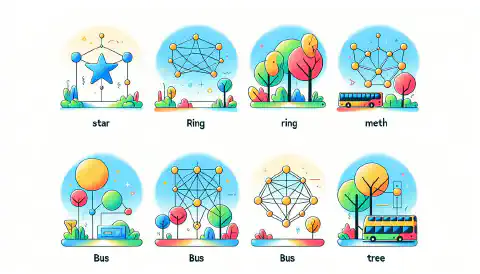Network Plus Course: Enhancing Network Availability and Resilience

Table of Contents
Click Here to Return To the Network Plus Course Page
Network Availability and Resilience
Introduction
In today’s interconnected world, network availability and resilience are crucial for businesses to maintain their operations and ensure uninterrupted communication. Downtime can result in significant financial losses and damage to a company’s reputation. This article explores the concepts of high availability (HA) and disaster recovery (DR), along with various strategies and technologies that enhance network uptime and resilience.
High Availability and Disaster Recovery
High availability refers to the ability of a network or system to remain operational and accessible for an extended period of time. It involves implementing measures to minimize downtime and ensure continuous service availability. Disaster recovery is a subset of high availability that focuses on restoring network functionality after a catastrophic event or major disruption.
HA and DR strategies involve redundancy and fault tolerance to minimize single points of failure. Organizations deploy redundant systems, components, and infrastructure to maintain network operations even if one element fails. Additionally, regular data backups and off-site storage are crucial for disaster recovery, enabling the restoration of critical data in case of a system failure or disaster.
Load Balancing for Network Availability
Load balancing plays a critical role in ensuring network availability and preventing overloads on specific servers or network resources. It distributes incoming network traffic across multiple servers, optimizing resource utilization and preventing bottlenecks. Load balancing can be achieved using hardware or software-based solutions.
A load balancer monitors the health and performance of servers and intelligently distributes traffic based on predefined algorithms. This enables efficient handling of requests, improves response times, and ensures that no single server becomes overwhelmed. Common load balancing algorithms include round-robin, least connections, and IP hash.
Multipathing and NIC Teaming for Redundancy
Multipathing and network interface card (NIC) teaming are techniques used to create redundant network connections and enhance network availability. Multipathing involves the use of multiple physical or logical paths between devices to ensure data can still flow even if one path fails. It improves both fault tolerance and load balancing.
NIC teaming, also known as link aggregation or bonding, combines multiple physical network interfaces into a single logical interface. This approach provides redundancy and increases network capacity by distributing traffic across multiple links. If one NIC fails, the traffic is automatically rerouted through the remaining active NICs, ensuring uninterrupted network connectivity.
Redundant Hardware and Clustering
To further enhance network resilience, organizations employ redundant hardware and clustering techniques. Redundant hardware involves duplicating critical components, such as routers, switches, and power supplies, to eliminate single points of failure. This redundancy ensures that if one component fails, another can seamlessly take over without causing a service disruption.
Clustering involves combining multiple servers or devices into a single logical unit to provide redundancy and fault tolerance. In a clustered environment, if one server fails, another server in the cluster automatically takes over the workload. Clustering can be implemented at various levels, including application clustering, server clustering, and database clustering.
Facilities and Infrastructure Support
Network availability heavily relies on the underlying facilities and infrastructure. A robust network infrastructure includes redundant power sources, cooling systems, and network connectivity. Redundant power sources, such as uninterruptible power supply (UPS) systems and backup generators, ensure continuous power supply during electrical outages. Redundant cooling systems prevent overheating and maintain optimal operating conditions for network equipment.
Furthermore, organizations can implement diverse network connectivity using multiple internet service providers (ISPs) or multi-homed network architectures. This approach reduces the risk of network downtime due to ISP failures or network disruptions. Network redundancy can also be achieved through technologies like Virtual Router Redundancy Protocol (VRRP) and Spanning Tree Protocol (STP).
Conclusion
Network availability and resilience are paramount for businesses in today’s digital landscape. High availability and disaster recovery strategies, load balancing, multipathing, NIC teaming, redundant hardware, clustering, and robust facilities and infrastructure all contribute to ensuring uninterrupted network operations. By implementing these measures, organizations can minimize downtime, mitigate risks, and maintain a reliable and resilient network infrastructure.






